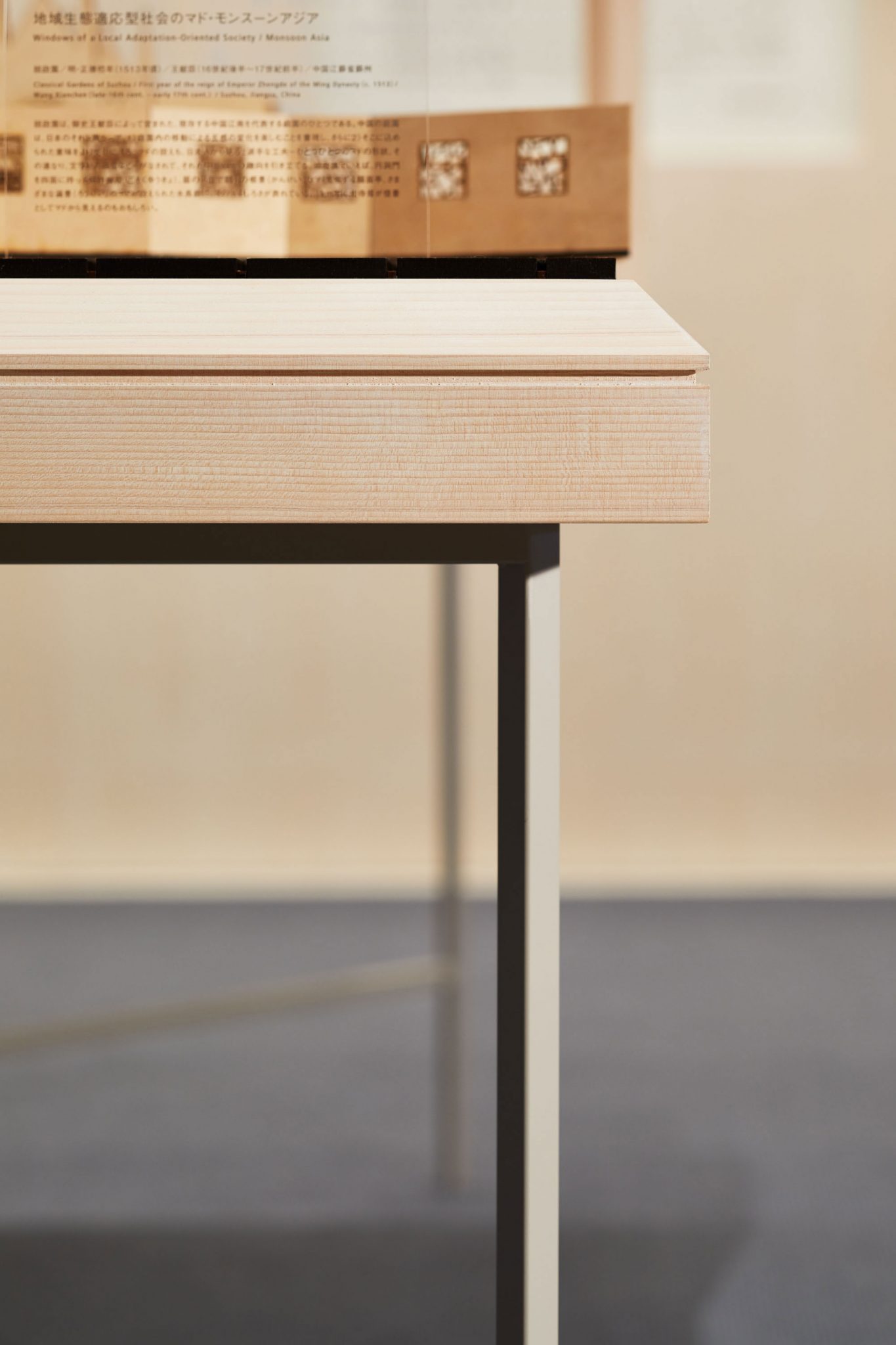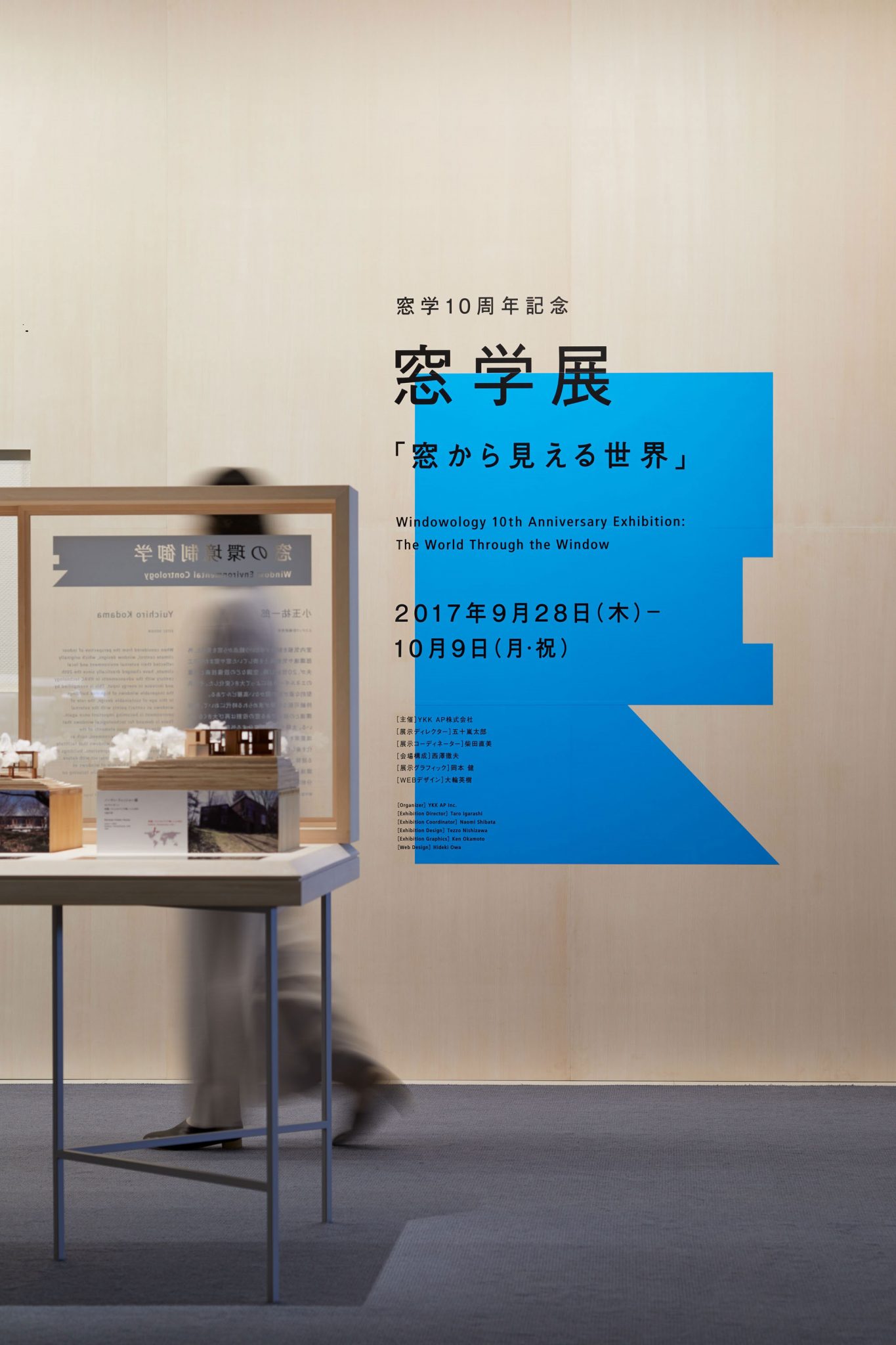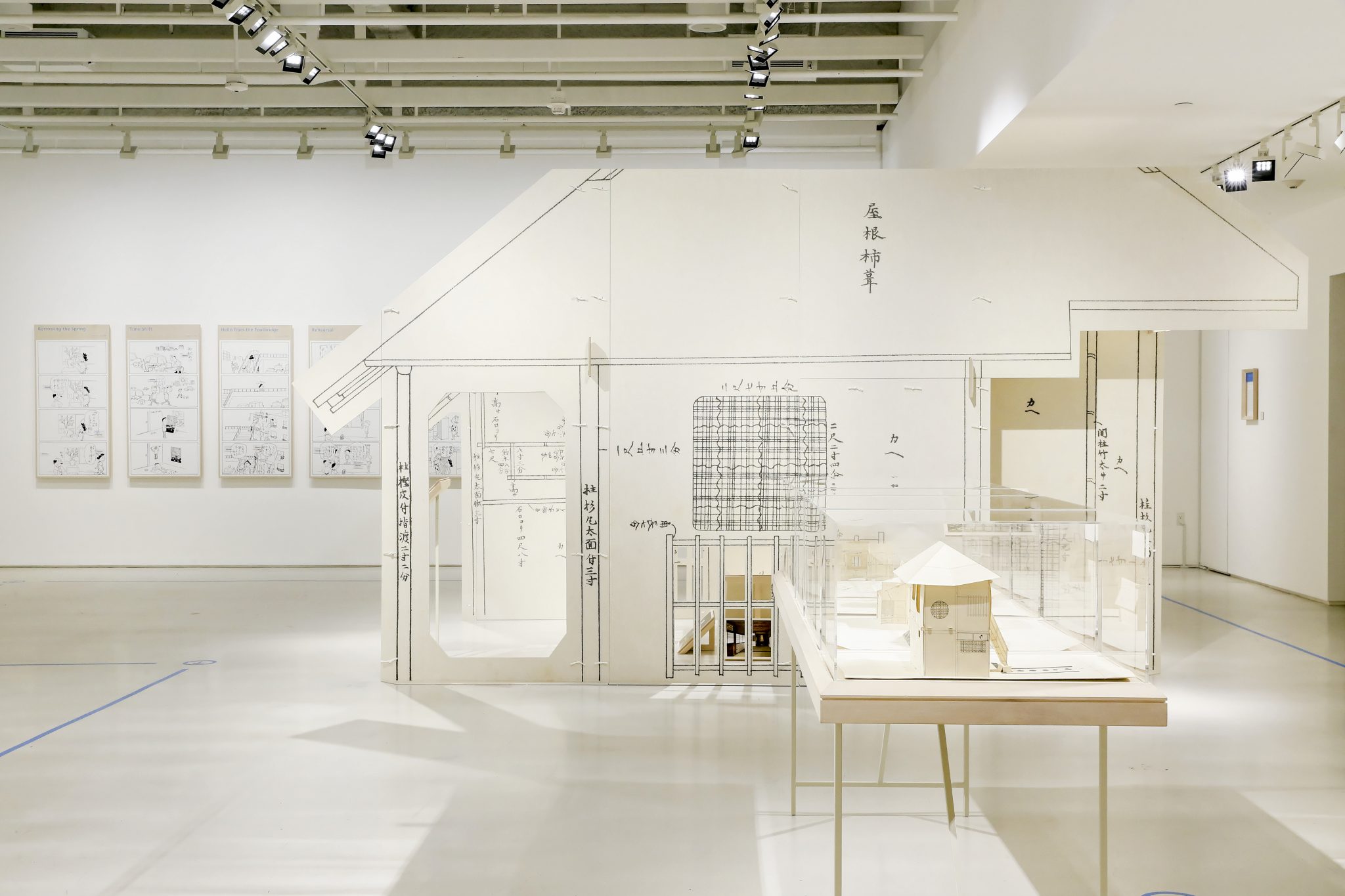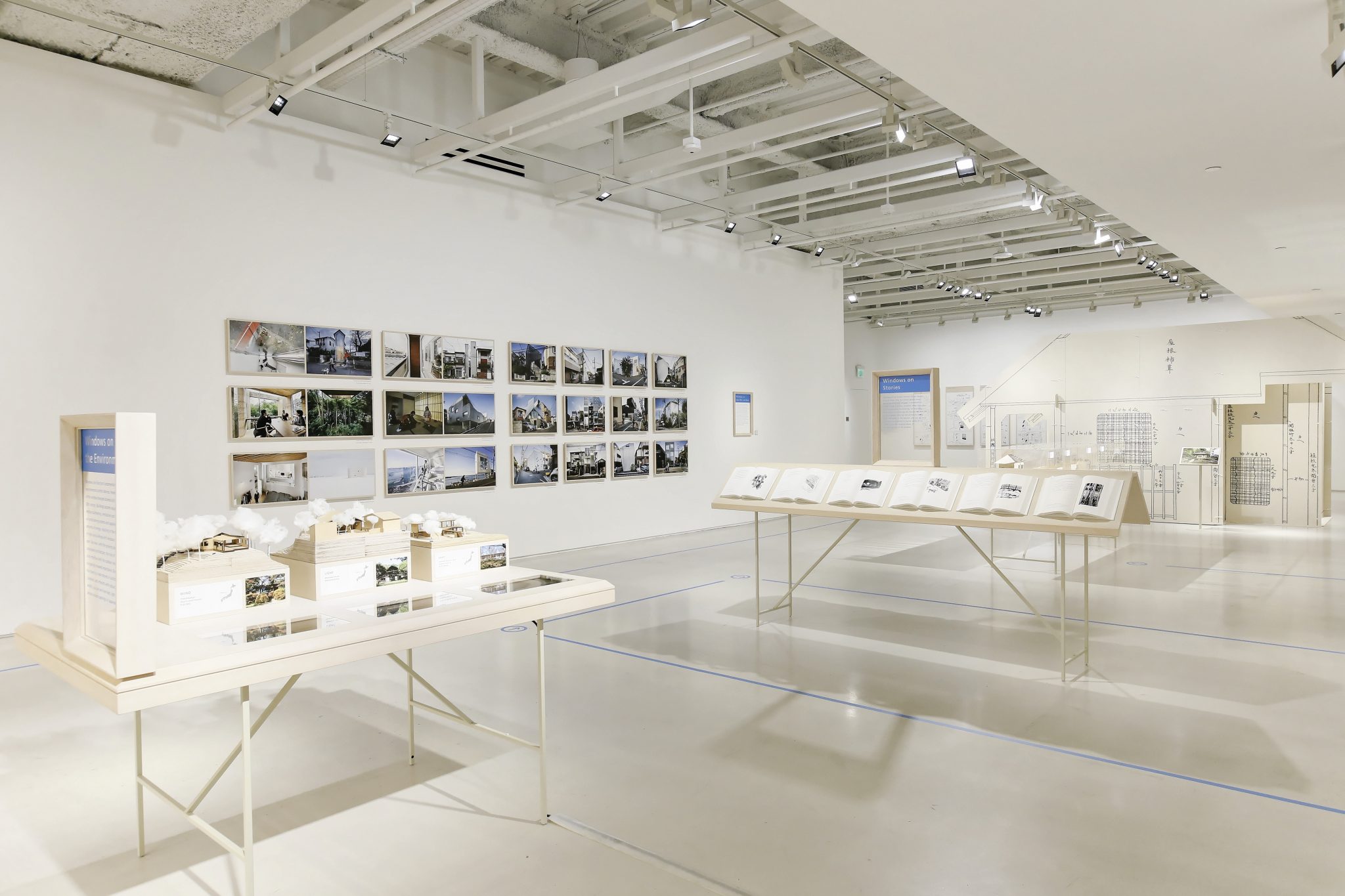Anticipating an Age of New Distance
In 2020, the decision was made to have the Windowology exhibition travel to Los Angeles, São Paulo, and London following its first showing at Tokyo’s Spiral in 2017. I had made the exhibition display furniture to be assembled on site to begin with in consideration of build time limitations, but because they needed to travel overseas and changes were made to the exhibition’s contents, I remade them to be more transportable and durable while maintaining the original designs. The pieces are composed simply of tables that are sized and shaped to the needs of each exhibit, equipped with display cases or monitors depending on the format of the exhibited materials and works, supplemented with labels set in window-like frames, and supported on thin steel legs. I gave the spruce tables a softened feel by incorporating 45-degree chamfers as a shared detail motif.
The challenge was the next step: figuring out how they should be installed. No changes could be made to the furniture between each location, but each venue required a separate tailor-made layout plan. What this meant is that I had to repeatedly test layout schemes for each of the different spaces, tweak the size and design of the furniture, and check again to see whether the layouts were still OK. This task of getting all of the spaces to work by laying out the same exhibition items, furniture, and labels that were to be shipped out from Japan was the trickiest part of the space design process. The finishes and details that I could discern from plans and photos of each venue were also slightly different from what I was accustomed to in Japan. I only had images to work from when trying to visualize the surrounding contexts and approach paths as well, so I really needed to use my imagination to experience the spatial sequences. But where does one begin when imagining exhibitions for galleries overseas that one has never visited before? It took some groping around in the dark while communicating remotely with the local teams to determine whether it would be possible to create the kind of exhibitions where the spaces themselves act as the presentation mediums. The pandemic started just as we began working, and I found myself experiencing an odd feeling of the world being both very far away and close at the same time. On one hand, I was made aware of our physical and cultural separation from each other in seeing the differences in how severely our respective countries were being impacted by COVID-19, but on the other hand, I did not feel there was much of a barrier in terms of our communications. Those were the circumstances under which we worked, with me giving instructions online, when we set up the first exhibition in Los Angeles in 2020, but the show was eventually brought to a close without being opened to any visitors. The installation process that I was worried about actually went surprisingly smoothly thanks to the great work of the local staff. However, the only record of the exhibition exists as a digital archive. What are we to make of that situation where no one was exposed to the works and experience of an exhibition, a space all about the body and sensibility of the beholder? Can we consider that as a one-off incident or will exhibitions become things to be experienced in an archival format even after normalcy returns? Those of us involved in their production may be faced with a very contemporary dilemma going forward if the strange sense of closeness and anticlimax that you feel when viewing an exhibition eternally frozen in a state of perfect beauty inside a screen come to be justified by arguments of efficiency and economy. As we look over similar incidents that occurred across the world, we must ask ourselves: in what way should we present exhibitions as windows to culture and society, and what kinds of new spaces should we secure for them to be beheld by the world? We are standing at a major crossroads where we need to rethink our various activities for an age of a new sense of distance.
Exhibition Space Design: Tezzo Nishizawa



